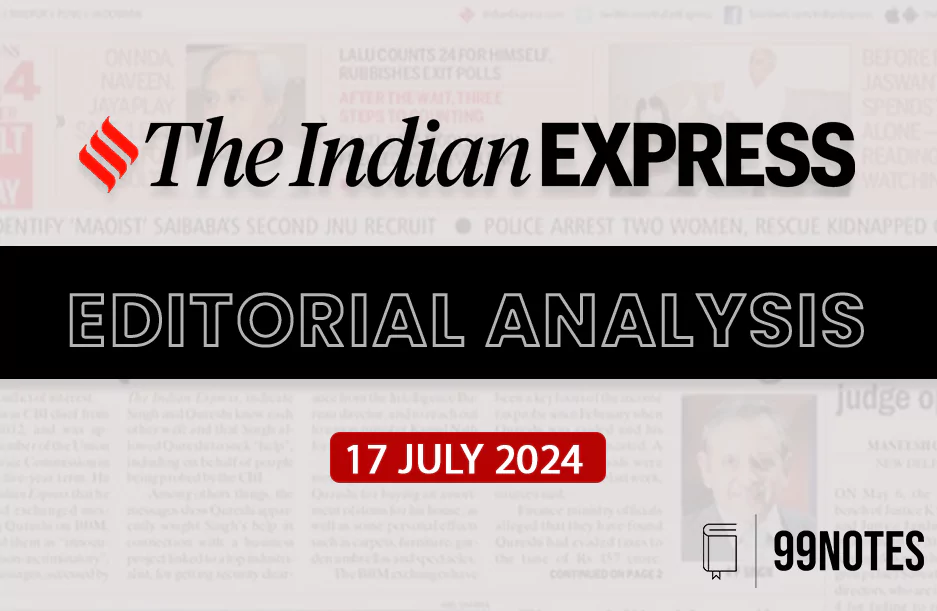17 July 2024 : Indian Express Editorial Analysis
1. She is not just a labarthi
(Source: Indian Express; Section: The Editorial Page; Page: 08)
| Topic: GS2 – Government policies for the Vulnerable section. |
| Context: |
|
NFHS data about women highlights dire status about the women in property ownership as only 13% owns a house of their own while 29 per cent report joint ownership. Reacting to such bleak statistics on asset ownership and well-known gender gaps in the paid labour force, government programme across the political spectrum have pushed for women to be registered under welfare schemes as primary beneficiaries.
Government Schemes:
Pradhan Mantri Awaas Yojana: in order to ensure empowerment of women, an advisory has been issued stating that all the houses under PMAY-G should include names of women members of the household in sanction details/ownership details
Beti Bachao Beti Padhao: It was launched with an aim to address declining Child Sex Ratio (CSR) and related issues of empowerment of girls and women over a life cycle continuum.
Issues with the Women Beneficiary:
Implementation Challenge:
- Issues of Documentation: There issues of documentation, procedural delays etc affect proper implementation of the government policies that benefit directly to the women. Women also lack financial resources to get the documentation ready to apply for schemes.
- Corruption: Issues of the corruption often leads to women getting sidelined from the welfare schemes. It also leads to exploitation of the women.
- Red tapism: Complex administrative procedures and red tape can make it difficult for women to apply for and receive benefits.
Social and Cultural Barriers:
- Patriarchy: Patriarchy act as a social barrier that restrict the women to take benefit of the government policies. Men in the family restrict the women to take independent decisions. Sometimes men take the benefit of the welfare schemes that is entitled to women.
- Safety Concern: Issues related to safety and mobility can restrict women’s participation in programs and utilization of benefits.
Lack of awareness:
- Information Gap: Many women, especially in rural areas, are not aware of the government policies and programs available to them.
- Communication Barriers: Ineffective communication strategies and literacy barriers prevent women from understanding how to access benefits.
Way Forward:
Institutional Support: Establish dedicated institutional bodies or units focused on women’s issues within government departments to oversee the implementation of gender-sensitive policies.
Streamlined Processes: Simplify documentation processes required to access government benefits. Use technology to create user-friendly platforms where women can easily apply for schemes.
One-Stop Centers: Establish one-stop centers in communities where women can get information, apply for multiple schemes, and receive assistance. These centers should be staffed by trained personnel who can provide support.
Targeted Communication: Develop targeted communication strategies that use local languages and culturally appropriate messages to reach women, especially in rural areas. Utilize various media channels such as radio, television, and social media.
Sensitization Campaigns: Conduct campaigns to change societal attitudes towards women’s economic independence and participation in public life. Work with men and boys to promote gender equality and support women’s empowerment.




